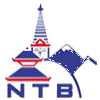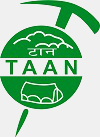WHAT IS THE BEST trekking season IN NEPAL?
Nepal's climate varies with its topography and altitude, ranging from the tropical to the arctic. The low-land Terai region in the tropical southern part of the country has a hot and humid climate that can rise above 45 Degree Celsius (113 Degree Fahrenheit) during summer. The mid-land regions are pleasant almost all the year round, although the winter nights are chilling. The northern mountain region has an alpine climate with considerably lower temperature in winter, especially, at altitudes above 3000m.
The Season
Trekking in Nepal can be undertaken throughout the year that comprises of four distinct seasons each with different attractions to offer:
Spring Season (Mid Feb – Mid June)
Springtime temperature is mildly warm in the lowlands and moderate at higher altitudes, with plenty of opportunities for clear mountain views. It is also the time for flowers to blossom, and the national flower of Nepal – rhododendron - splashes the mountainsides with its colorful beauty throughout the spring. This is also the time of local festivals in Kathmandu Valley. The Local people, who are farmers by profession, welcome spring season with great fervor. The indigenous Newar communities go colorful in festive mood. The spring festival begins with HOLI (the festival of color) followed by numerous local festivals.
Monsoon Season (Late June to Mid Sep)
This is also the monsoon season in Nepal. The weather is hot and wet at times. It rains almost every day with occasional thunderstorms in the evening, though mornings are often clear and you can expect beautiful sunrises. This is the favorite season to trek in the arid rain shadow areas like Upper Mustang, Dolpo and Kailash. This season is also recommended for forest researchers and botanists. The advantage of trekking in the summer months is less crowded trails and the less cold in the high mountains.
Autumn Season (Mid Sep_ Mid Dec)
This is the best trekking season in Nepal. The weather is very pleasant and clear so the mountain views are the best. This is the peak season for trekking as mountain views are guaranteed so it is wise to book your flights well in advance. This is also the season of festivals as Nepal celebrates the biggest Hindu festivals – Dashain (the National Festival) followed by Tihar (the festival of lights).
Winter (Mid Dec to Mid Feb)
This is a great season for those who do not mind cold weather in the Himalayas. During this season mountain peaks are more visible and the days are longer in the Himalayas being sunny almost every morning to late afternoon. We provide you with warm down jackets and the sleeping bag to keep you warm enough in the night. Most of the lodges are open this time too which offers you heated dining hall till late. Occasional snow can sometime prevent us to go further. Mid December to end of January is the best time to trek during the winter.
Temperature and Rainfall
Nepal is the country of extremes. The low-land plains of the Terai can have tropical temperatures and also mosquitoes, particularly in the summer months. The Himalayas can get to sub-zero temperatures, but the sun can bring some warmth during the day, even in the mountains. The temperature of Kathmandu goes below 1 Degree Celsius (34 Degree Fahrenheit) in winter and rises to an average of 25 Degree Celsius (77 Degree Fahrenheit) in summer.
The average temperature in Kathmandu during the four seasons:
* Spring season: 16-23 Degree Celsius (61-73 Degree Fahrenheit)
* Summer season: 23-25 Degree Celsius (73-77 Degree Fahrenheit)
* Autumn season: 15-24 Degree Celsius (59-75 Degree Fahrenheit)
* Winter season: 9-12 Degree Celsius (48-54 Degree Fahrenheit)
During the rainy monsoon season between June to August, it rains to an average between 200-375 millimeters in Kathmandu. There is occasional rainfall during the other seasons too. In an average, 1300 millimeters of rain falls in Kathmandu every year.
--Hari Sharan Bhuju







